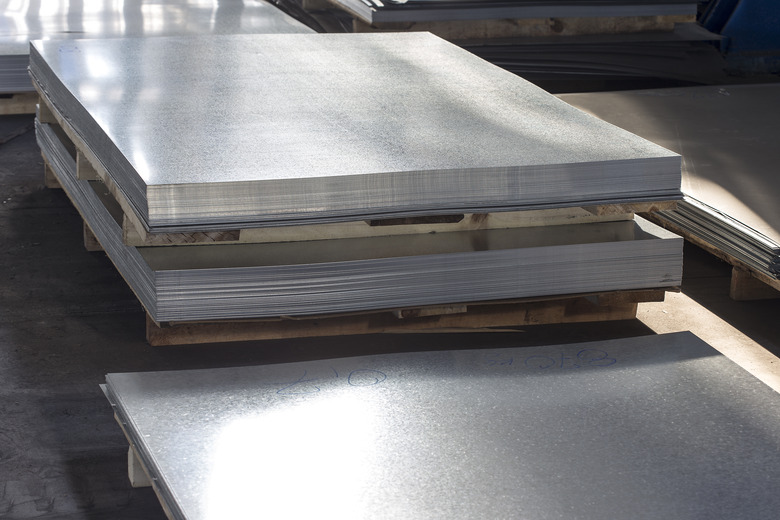How To Calculate The Thickness Of A Rectangular Plate
You can easily measure the length and width of a rectangular plate with a metric ruler. However, a direct measurement of the third plate dimension (thickness) will not be accurate if the plate is thin enough. You can calculate the plate thickness as a ratio of the volume of the plate to its surface area.
Step 1
Measure or find out elsewhere the length and width of the plate.
Step 2
Multiply the length and width, if they are given in inches, by the factor 2.54 to convert the dimensions into centimeters. For example, the plate dimensions are 5-by-3 inches that will be converted to 12.7 and 7.62 cm.
Step 3
Multiply the length by its width to calculate the plate surface area in square centimeters. In this example, the surface area is 12.7 x 7.62 or 96.774 square cm.
Step 4
Calculate or measure the volume of the plate; if the plate density is known, divide the plate weight by the density. For example, the plate is made of aluminum (the density 2.7 g/cubic cm) and weighs 41.85 g. Then the plate volume is 41.85 / 2.7 = 15.5 cubic cm.
Step 5
Divide the plate volume by the surface area to calculate the thickness. In this example, the thickness is 15.5 cubic cm / 96.774 square cm = 0.16 cm or 1.6 mm.
References
Cite This Article
MLA
Writer, Contributing. "How To Calculate The Thickness Of A Rectangular Plate" sciencing.com, https://www.sciencing.com/calculate-thickness-rectangular-plate-5959225/. 13 March 2018.
APA
Writer, Contributing. (2018, March 13). How To Calculate The Thickness Of A Rectangular Plate. sciencing.com. Retrieved from https://www.sciencing.com/calculate-thickness-rectangular-plate-5959225/
Chicago
Writer, Contributing. How To Calculate The Thickness Of A Rectangular Plate last modified March 24, 2022. https://www.sciencing.com/calculate-thickness-rectangular-plate-5959225/
